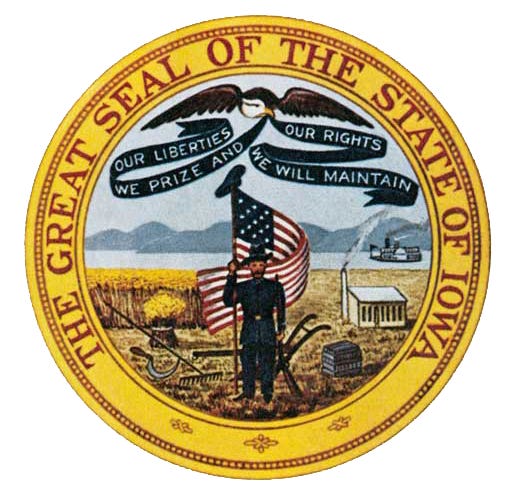NGO Project Part XIX: CTCL in Iowa
Our liberties we prize and our rights we will maintain
Introduction
Question: Is CTCL misrepresenting the information on the IRS Form 990 stating that the PURPOSE of the grants were to help support the SAFE administration of public elections during the Covid-19 pandemic?
Answer: It appears so given the results of both aggregate, state and county by county analysis as we will see below. It appears this is a quantifiable democrat ballot harvesting operation.
Background
This is Part XIX in The NGO Project series which examines the role NGOs had in determinative outcomes in the 2020 Presidential Election. In prior articles, I focused on the effect CTCL had on AZ, CO, CT, GA, ME, ME, MI, NH, NM, NY, OH, PA, RI, TX, UT, VT, VA and WI.
This article will solely focus on CTCL in Iowa (IA).
Calculation Basis
The calculation basis was previously explained in detail here. In this article, I do make one adjustment and that is to calculate the 2020DIFF factor by weighted average rather than arithmetic average.
Analysis
63 of 99 IA counties (64%) received CTCL grants.
Total votes cast in CTCL counties were ~ 1,316,276 (76%) and NonCTCL counties were ~ 374,589 (24%). To state it a different way, on a per county basis, CTCL had the opportunity to influence 76% of IA voters.
The total amount of grants to IA was ~ $4,172,717 and the value of individual grants ranged from ~ $5,000 to $1,882,000
This table includes the top 10 CTCL grants by county.
$3,774,000 of the grants (90%) were focused in the 10 counties above. The $/vote spent by CTCL in these five counties range from $0.43/vote to $7.83/vote (all parties). The vote totals in these 10 counties account for ~47% of the votes in IA.
To state that a different way, ~90% of the grants were spent on ~47% of the total votes cast in IA. Is that fair if this was all about a Plandemic?
The average 2016 D/R ratio for CTCL Counties was 0.618 (not weighted). The average 2016 D/R ratio for NonCTCL Counties was 0.533 (not weighted). This means that CTCL grants were provided to slightly more D leaning counties.
The top 5 counties in terms of grants had a average 2016 D/R ratio of 1.31….big time D areas for sure. This is ~3x the NonCTCL county average in 2016. More bias in favor of D.
To continue on this track, if you look at all the counties in 2016 that had a D/R ratio of less than one (R leaning counties), there were 93 (94%) counties. In total, they received ~ $722,000 in grants in 2020. This is a stingy ~ 17% of the total 2020 CTCL grants in IA. These counties contributed ~939,000 votes (all parties) in 2016 which is 60% of the vote total.
To put it a different way, 17% of the 2020 CTCL grants went to counties where 60% of the votes were cast in 2016 in NonCTCL counties. These were heavy R counties. More bias in favor of D.
The top 10 R leaning counties (lowest D/R) in 2016 that received CTCL (a pittance) money in 2020…..
Do these facts alone confirm or disapprove my thesis that the grants were NOT used for public safety?
2020DIFF Calculated with Weighted Average
For this analysis, I used a slightly different way to calculate the 2020DIFF using a weighted average based on total votes in a county. This is what it looks like.
w = Total County Vote / Total State Vote
a = D/R2020 - D/R2016 (for CTCL Counties)
a' = a * w (per county)
2020DIFF = sum(a'1:a'n)
This method in theory permits a better correlation for D vote harvesting because it is weighted for counties with higher vote totals.
The 2020DIFF for CTCL counties is effectively 0.047 and for NonCTCL counties is a whopping -0.106. Big time R trend indeed. This means that the CTCL D vote harvesting factor in CTCL counties is 0.047-(-0.106) = 0.153 or ~ 15%.
NonCTCL counties went super hard or Trump as you can see from the -2020DIFF.
This results in ~75,000 additional D votes or a potential swing of ~150,000 votes total.
Trump beat Biden by ~ 138,000 votes so by these calculations, that could have been a bigger victory for Trump. As noted in the chart below, I conservatively did not include a D contribution from any counties that had a -2020DIFF.
These are all of the CTCL counties.
Noteworthy R Trending Stalwarts
These are the top 5 R stalwarts in terms of -2020DIFF which indicates higher R turnout as a ratio to D between 2016 and 2020. 4 of the 5 received some minimal amount of CTCL grants. Why bother with a $5,000 grant Chickasaw and Decatur? Was it worth it to have your image tarnished?
Conclusion
CTCL issued ~$4.2MM grants in IA and “purchased” ~ 75,000 more D votes in CTCL counties than would have occurred without CTCL grants.
That is ~ $56/Vote.
IA was not a good investment if you were part of the election racketeering cabal.
References
CTCL IRS Form 990 (revised form from Jan 2022 used)
Telegram - https://t.me/electiondataanalyzer
Truth - @ElectionDataAnalyzer
The math here is simple, try this on your own. It is a model to look for trends, not an exact science.







